How to recreate an outdoor atmosphere in a trade show booth
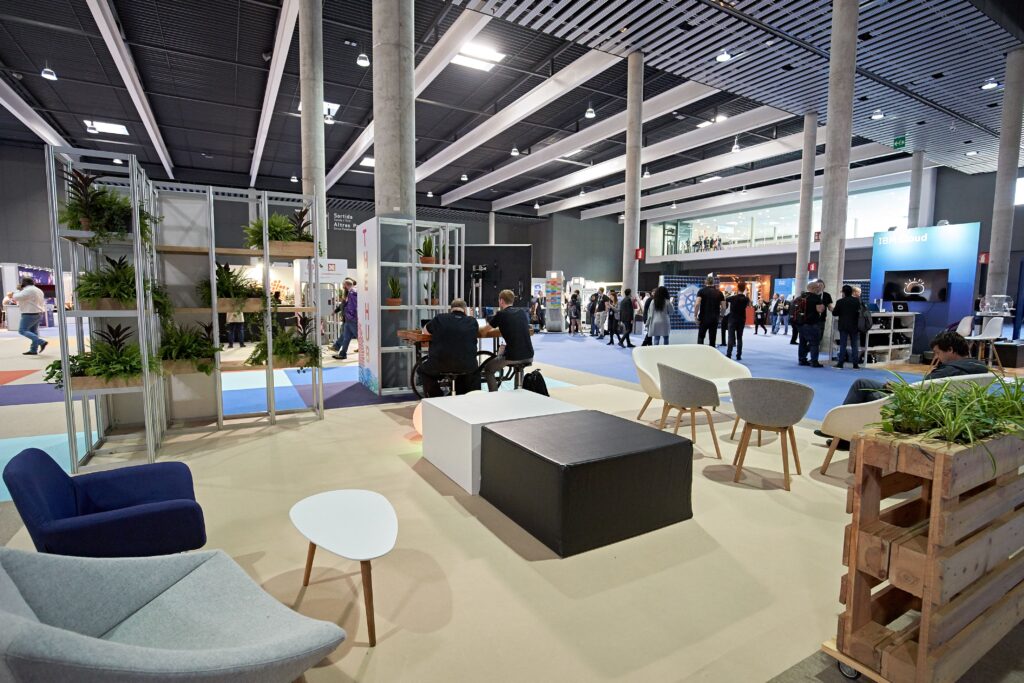
How to recreate an outdoor atmosphere in a trade show booth? When we think about trade show booths, most of the focus tends to be on interior design. However, recreating an outdoor atmosphere can completely transform the visitor experience and make your brand stand out. How can you achieve this? Here are the key tips. Table of contents In this post, we’ll show you how to recreate an outdoor atmosphere in a trade show booth and transform the visitor experience. From incorporating greenery and natural materials to integrating sensory effects and open spaces, we explore practical ideas to evoke the feeling of being outdoors in an indoor setting. Benefits of recreating an outdoor atmosphere A booth that incorporates outdoor elements is not only visually appealing but also: Attracts more visitors: An original and inviting design sparks curiosity. Creates an immersive experience: Visitors feel transported to a different environment. Strengthens your brand image: Natural and sustainable details convey positive values. Key elements for recreating an outdoor atmosphere 1. Inspiring greenery Incorporate real or artificial plants. A small garden or green walls not only enhance the space’s aesthetics but also boost attendees’ well-being by 15%. Real or artificial plants? Both options work, depending on your budget and logistics. 2. Natural materials Use wood, stone, or bamboo in your decor. These materials add authenticity and create a connection with the concept of nature. 3. Impactful lighting Simulated natural light: Use full-spectrum LED panels to mimic sunlight. Dynamic lighting: Changes in intensity and color can recreate different times of day, adding dynamism to the space. Do you have questions about your participation in a trade show? Get our free consultation! 4. Decorative details Themed vinyls: Landscape images or natural textures on the walls. Outdoor furniture: Folding chairs, wooden benches, or poufs help create a relaxed atmosphere. 5. Sensory effects Ambient sound: Play nature sounds, such as birdsong or the rustling of the wind. Natural scents: Fragrances like freshly cut grass or fresh flowers create a multisensory experience 6. Space design Open areas: Create spaces that evoke patios or terraces, encouraging interaction. Translucent ceilings: Simulate openness and allow natural lighting How to incorporate outdoor elements into different spaces You can divide the booth into zones that make the most of outdoor-inspired concepts: Eye-catching entrance: Feature elements like a small arch covered in greenery or rugs with natural textures to create a warm welcome. Relaxation zone: Set up areas with comfortable chairs and low tables surrounded by plants, inviting visitors to stay longer. Interactive area: Create spaces where attendees can engage in activities, such as writing messages on wooden-backed chalkboards or taking photos in a nature-themed photo booth. Conclusion: Location is key Recreating an outdoor atmosphere in a trade show booth is an opportunity to surprise and connect. Every detail matters in turning a visitor’s stop into an unforgettable experience. From incorporating natural elements to integrating sensory effects, a well-designed outdoor-inspired setting can make all the difference.
How do I calculate the capacity for an event?

How to accurately calculate the capacity for your event Calculating the capacity for an in-person event is essential to ensure the comfort and safety of attendees, as well as to comply with current regulations. Although social distancing measures are no longer mandatory, it is still crucial to consider several factors to calculate the capacity properly and optimize the experience for participants. Table of contents Calculating the capacity for an in-person event is essential to ensure both the comfort and safety of attendees. In this post, we explore the basic rules for different types of spaces, from trade shows to conferences, and explain how factors such as furniture arrangement, ventilation, and circulation influence this calculation. We also highlight the importance of good space design to ensure an optimal experience, emphasizing how professional expertise and advice can be key to the success of your event. Guidelines for Calculating Event Capacity Trade Show Halls Traditionally, the rule of 1 person per 3 m² has been used in these spaces. This calculation is useful to ensure there is enough space for the free movement of people, preventing overcrowding and allowing for smooth circulation. Meeting Rooms and Conference Halls In these types of spaces, it is recommended to have 1 person per 2 m². If the room has fixed seating, it’s important to verify the maximum capacity that these allow and ensure it is not exceeded to avoid discomfort. Events with fixed seating It is suggested to operate at 100% capacity as long as the venue’s evacuation and safety regulations are followed. It is crucial to keep exit routes clear and ensure that all attendees can enter and exit the venue safely. Factors to Consider for Calculating Event Capacity: When calculating the capacity for an in-person event, it is crucial to consider several factors that directly affect the space’s capacity and the safety of attendees. An accurate calculation not only ensures compliance with current regulations but also guarantees that all participants have a comfortable and safe experience. These factors will help you determine the optimal number of people who can attend your event. Ventilation It is crucial to ensure that the space has an adequate ventilation system, especially in enclosed areas. Good ventilation not only improves comfort but can also be a requirement to comply with health and safety regulations. Do you have questions about your participation in a trade show? Get our free consultation! Accessibility and Circulation The space design should allow for smooth circulation, with clearly defined access and exit routes, free of obstructions. This is especially important to avoid overcrowding and ensure that all attendees can move easily throughout the venue. Type of event Depending on whether attendees will be standing or seated, the capacity can vary. For example, in events where people are standing, a higher density of people per square meter is usually allowed compared to events with fixed seating. Furniture Arrangement The arrangement of furniture, such as chairs, tables, or stands, directly affects the space’s capacity. Proper planning of the layout not only optimizes the use of space but also helps create a smoother and more comfortable overall experience for attendees. This is especially important in events where circulation and access to different areas are critical to the event’s success. Local Regulations It is always essential to review the local regulations that apply to the type of event and the specific venue. These regulations may include requirements regarding the maximum capacity, safety measures, and other aspects related to the capacity.
How to attract visitors to my stand at trade shows?
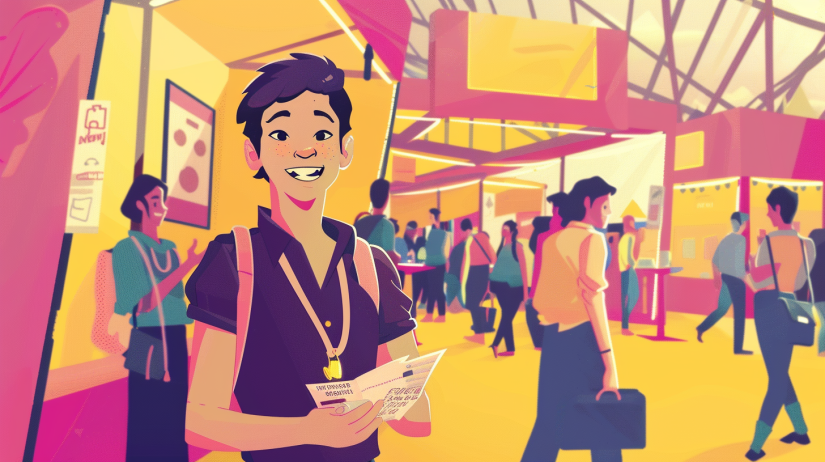
How to attract visitors to your stand at trade shows? Learn how to design trade show stands that captivate and attract visitors, standing out in a competitive environment and effectively conveying your brand’s message. Table of contents In the competitive world of trade shows, attracting visitors to your stand is crucial. An effective stand design must captivate instantly, generate interest, and clearly convey your message. To achieve this, it’s essential to invest in an innovative and attractive design, organize the space functionally, and incorporate audiovisual elements. Additionally, it’s important to create a comfortable and welcoming environment for visitors, reflecting your brand’s values. With these strategies, your stand will stand out and capture attention at any trade show. The Importance of trade show stand design Trade show stand design plays a crucial role in attracting visitors. A well-thought-out design not only grabs attention but also facilitates interaction with attendees, offering a comfortable and memorable experience. Investing in an innovative and functional design can make the difference between a crowded stand and one that goes unnoticed. Key Strategies to Attract Visitors to Your Stand at Trade Shows 1. Attractive and functional design An attractive stand design is essential to grab attention. Use striking colors that are consistent with your brand, and make sure the design is functional, allowing easy navigation and access to information. 2. Use of Interactive Technology Incorporating screens, augmented reality, and other technological elements can make your stand more interactive and appealing to visitors. These technologies not only grab attention but also provide information in an innovative way. 3. Live Activities and Demonstrations Organize live activities and demonstrations at your stand to attract visitors. These activities not only generate interest but also provide an opportunity to interact directly with potential customers and showcase your products or services in action. Tips for creating a stand design that captivates instantly An effective stand design should grab attention instantly and clearly convey your brand’s message. The incorporation of technology can be a great ally in stand design. Interactive screens, augmented reality, and other technological innovations can provide unique experiences for visitors and make the stand memorable. At Servis, we always work around three main pillars when designing a trade show stand: Selection of materials and colors The choice of materials and colors should reflect your brand’s values. Use sustainable materials if your company values sustainability. The colors should be consistent with your brand identity and attractive to visitors. Integration of audiovisual elements Audiovisual elements, such as videos and interactive presentations, can reinforce your message and capture attention. Make sure these elements are well integrated into the stand design and are visible to visitors. Arrangement of products and promotional materials Products and promotional materials should be well arranged to stand out. Use lighting to highlight the most important products and ensure there is enough space for visitors to interact with them. Do you have questions about your participation in a trade show? Get our free consultation! Examples of trade show stands that attract crowds Reviewing examples of successful stands from past trade shows can provide valuable insights and strategies for your own stand. Here are some examples of successful stands to inspire you and help you understand what worked well and what could be improved: See more stands from the digital sector See more stands from the gastronomic sector
What should be considered when designing a trade show stand?

What should be considered when designing a trade show stand? There are several factors to consider when designing a trade show stand. Clearly conceptualizing the space is essential in order to convey a message that aligns with the mission, vision, and values of any brand. Table of contents Designing a successful trade show stand requires considering various factors, from space conceptualization to the arrangement of elements and the use of technology. This article explores the keys to creating attractive and functional stands, highlighting the importance of creativity, strategy, and a European perspective in design. At Servis, we focus on clarifying our clients’ goals, enhancing face-to-face relationships, and staying at the forefront of European trends to offer unique and effective solutions in trade show stand design. There are several factors to consider when designing a trade show stand. Clearly conceptualizing the space is essential to convey a message that aligns with the mission, vision, and values of any brand. Planning is key to ensuring everything functions properly and each element serves its specific purpose. Key factors for designing a trade show stand Beyond the available budget and the interpersonal interactions that will take place at the stand (how visitors will be attended to, whether there will be a place to sit and close a deal, how products will be displayed attractively…), the layout of the stand’s elements must have an appealing and clear design. Additionally, it’s crucial to consider the lighting and colors of the stand, as they can influence visitors’ perception and the way they interact with the space. Trade show stand design: creativity and Strategy The creative team tasked with designing a trade show stand must develop a story that effectively communicates, with a limited set of resources, what each customer feels and does. Creativity is essential to stand out from the crowd of exhibitors and capture visitors’ attention from the very first moment. Everything in the stand should serve to reinforce the brand image and attract attention without distorting the message being conveyed. The arrangement of products, materials used, and decorative elements must align with the corporate identity and marketing objectives. The incorporation of technology can be a great ally in stand design. Interactive screens, augmented reality, and other technological innovations can provide unique experiences for visitors and make the stand memorable. At Servis, we always work around three main pillars when designing a trade show stand: Do you have questions about your participation in a trade show? Get our free consultation! Use of Technology in Stand Design The incorporation of technology can be a great ally in stand design. Interactive screens, augmented reality, and other technological innovations can provide unique experiences for visitors and make the stand memorable. Our approach to trade show stand design At Servis Complet, we always work around three main pillars when designing a trade show stand: Clarity in the objective Having a clear understanding of what our client wants to happen in their space at all times. This includes everything from the first visual contact to the more detailed interactions. Every element must be designed to serve a specific purpose and contribute to the final objective. Boost relationships Enhancing face-to-face relationships with visitors is crucial. A good stand design should facilitate these interactions, creating comfortable and welcoming spaces where productive conversations and business deals can take place. European Vision Maintaining a European vision means staying informed about the trends and standards of the European market, ensuring that the stand design not only meets local expectations but also stands out on an international level.
What is the best location for a trade show stand?
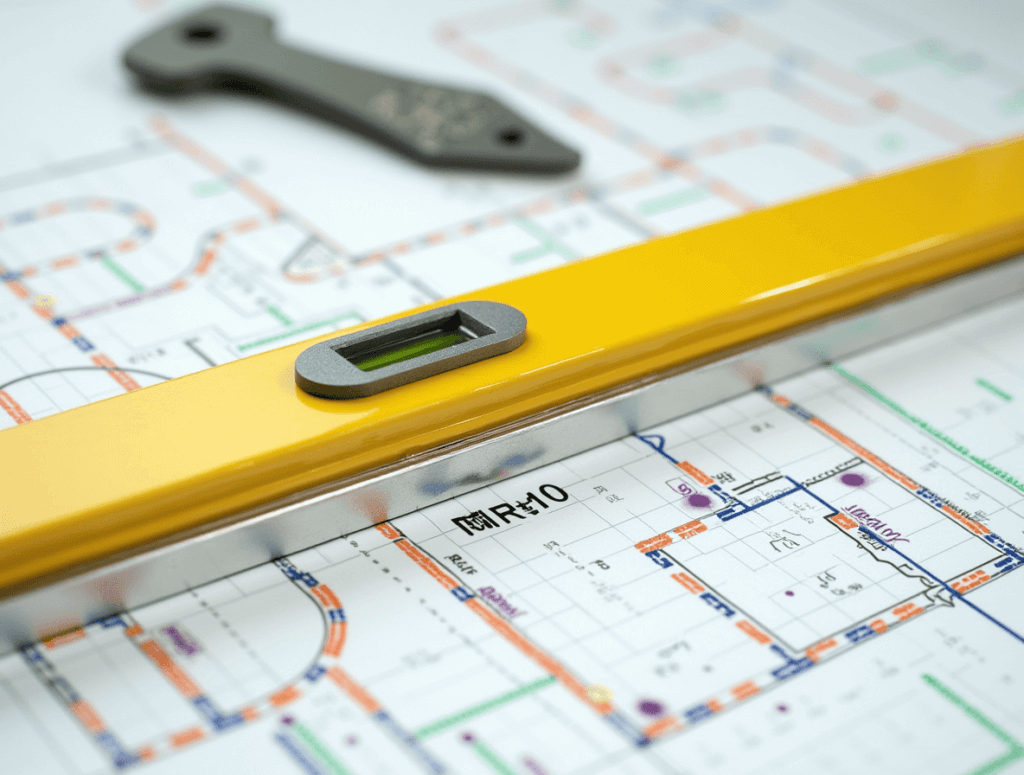
What is the best location for my trade show stand? When considering participating in a trade show, one of the biggest dilemmas that arises is: What is the best location for my stand? Choosing the right location can make the difference between being the center of attention or going unnoticed. Table of contents In this post, we explore how to choose the perfect location for your trade show stand and why this decision can make a significant difference in your success. From the main entrance to common areas and premium zones, we analyze the best spots and provide practical tips to optimize your stand’s visibility and impact. 1. The heart of the action: the entrance and main aisles Being near the main entrance or in a high-traffic aisle is always a good idea. Keep in mind that it’s the first area visitors pass through when entering, and if you’re there, you can take advantage of that moment of curiosity and energy. Additionally, being in a main aisle ensures a constant flow of visitors throughout the event, even from those wandering without a specific destination. This location is key if you’re wondering what is the best spot for my trade show stand. Advantages of being at the main entrance Greater initial visibility: Key to deciding the best location for your trade show stand. Access to the most curious and energetic audience: Visitors are more likely to explore at the beginning of their journey. Considerations Competition for the space: The entrance location is highly sought after, and there may be strong competition to secure it. Higher cost: It is a prime location, and the price may be higher. 2. Near common areas: cafeterias, rest zones, or activities Another strategic location for your trade show stand is near common areas, such as cafeterias or rest zones. These areas tend to attract many visitors taking a break, which can be a great opportunity to capture their attention. It can also be beneficial to position yourself near spaces where activities or demonstrations take place, as they often draw large crowds. If you’re wondering what is the best spot for my trade show stand, being near these common areas could be an excellent choice. Advantages Relaxed interaction: Rest areas allow for interacting with visitors in a more relaxed environment, which is ideal for capturing attention more effectively. Constant traffic: Activities and demonstrations attract crowds, ensuring a continuous flow of interested people. Considerations Noise and distractions: These areas can be noisy, so you must ensure that your message doesn’t get lost among the distractions. Do you have questions about your participation in a trade show? Get our free consultation! 3. Far, but not too far: the perfect balance It may not seem as obvious, but sometimes secondary aisles have their charm. While they don’t have the same traffic as the main aisles, they offer one advantage: less competition. In a less crowded aisle, you have a better chance of grabbing the attention of visitors passing by, without as many distractions around. However, make sure you’re not too isolated, as you could get lost among the other stands. Finding this balance is also important when answering the question of what is the best location for my trade show stand. Advantages Less direct competition: This allows you to capture visitors’ attention without as many distractions. Quieter environment: Ideal for having more detailed conversations and building meaningful connections. Considerations Limited visibility: It’s important that the stand remains visible from the main areas. Accessibility: Avoid being too far from high-traffic areas to ensure a constant flow of visitors. 4. Avoid hidden corners and exits It’s essential to avoid hidden corners or being too close to exits. In those areas, visitors are often more focused on leaving or looking for something else, and your stand could go unnoticed. Additionally, corners can have visibility issues, making it harder to capture attention. If you’re wondering what is the best spot for my trade show stand, avoid these less strategic locations. Disadvantages Reduced visibility: Hidden corners and exit areas are often less visible, making it harder for visitors to spot your stand. Distraction or exit focus: Visitors may be more focused on leaving or moving to other parts of the event, rather than engaging with your stand. Lower foot traffic: These areas tend to attract fewer visitors, reducing the flow of people to your stand. Alternatives Strategic middle areas: Choose spaces that are in between high-traffic zones but not directly at the corners or exits. This provides visibility without the distraction of being too close to an exit. Near key attractions: Position your stand near popular spots or activities that draw crowds, ensuring a steady flow of visitors without the drawbacks of being hidden. High-traffic intersections: Find spots where aisles intersect, which can lead to increased foot traffic and better visibility without being tucked away in corners. Conclusion: Location is key Choosing the right location for your trade show stand plays a crucial role in maximizing visibility and engagement. Whether it’s near the entrance, common areas, or strategically placed in quieter zones, each location has its advantages and considerations.
What distinct areas should my trade show stand include?
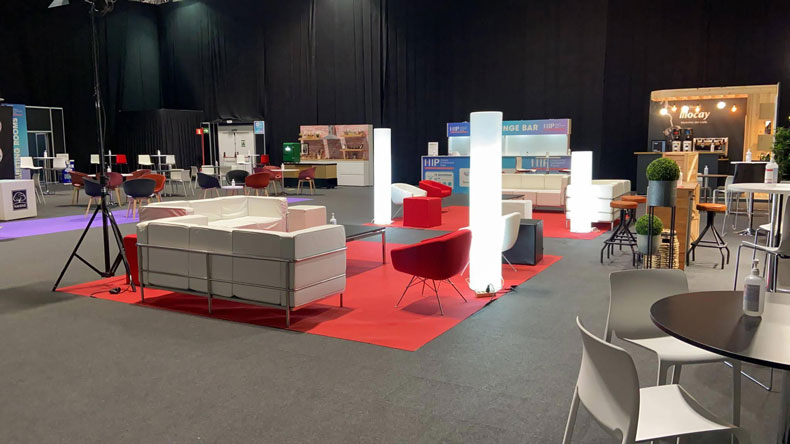
What key areas should my trade show stand include? When designing a trade show stand, each area within the stand serves a strategic function that helps maximize the visitor experience and enhance brand presence. Table of contents In this post, we explore the importance of spaces within a trade show stand and how each area can be optimized to attract and connect with the audience. We analyze everything from the reception area to the relaxation zone, highlighting the functionality of each space and its role in the visitor experience. With the support of companies like Servis, you can design a stand that combines aesthetics and functionality, maximizing your brand’s impact at the event and leaving a lasting impression on attendees. Main areas in a trade show stand Reception area: the first contact The reception area is the first point of contact with visitors and, therefore, should be visible and accessible from the main aisles of the trade show. This area should include: Reception counter: A clearly defined and visually accessible space for visitors. Welcome staff: Responsible for providing quick and efficient service, guiding visitors about the stand’s offerings. Branding signage: The company logo and name prominently displayed to reinforce the brand identity. Exhibition area: the central part of the stand The exhibition area is the core of the stand and the space where products, services, or technologies are showcased. This space should capture attention and facilitate interaction with the audience. Essential elements include: Display cases and stands: To showcase products clearly and organized. Interactive screens: Provide additional information about the products, either in video or animation format. Live demonstrations: Invite visitors to experience firsthand what the company offers. Graphics and visuals: Banners and visual elements that convey the brand’s message in an appealing way. Do you have questions about your participation in a trade show? Get our free consultation! Meeting area: a space to connect in a personalized way The meeting area is a space that allows for more private and in-depth conversations with potential clients. Its design should ensure comfort and privacy, so it’s recommended to include: Tables and chairs: To conduct meetings in a comfortable setting. Dividers or panels: Help reduce background noise and offer privacy. Screens for presentations: Allow for personalized product presentations or videos. Storage area: a practical element The storage area is an essential space for maintaining organization within the stand. This discreet area allows for storing promotional materials, additional samples, and staff belongings without disrupting the aesthetics or functionality of the visible areas. Multimedia area: capture attention with technology The multimedia area is ideal for projecting videos, giving presentations, and displaying visual content that complements the product or service offering. This space enhances the visitor experience and creates an immediate visual impact. In this area, you can incorporate: Large-format screens: Visible from a distance to capture attention. Audio systems: Accompany visual presentations and ensure the message reaches all attendees clearly. Rest area: a relaxed space for informal conversations A rest area is an added value that allows visitors to take a moment to relax in a welcoming environment. This area also facilitates informal interactions with attendees, creating a comfortable atmosphere that encourages people to spend more time at the stand. Some elements for this area include: Sofas or high lounge tables: For visitors to relax in a comfortable and professional setting. Water or coffee dispenser: A detail that is always well received and encourages attendees to stay at the stand. Conclusion Properly distributing the spaces in a trade show stand is key to creating a complete and memorable experience. From the reception area to the rest area, each space should serve its purpose, optimizing the impact of the stand and maximizing the value of every interaction. At Servis, we know how to design stand spaces that stand out and create a connection with the audience. Count on us to make your brand shine at the next trade show!
What is the importance of customer service at a trade show?

Why is customer service important at a trade show? Customer service at a trade show is key to ensuring your brand gets a return on investment. These events are a great opportunity to connect face-to-face with your audience, build relationships, and showcase your company. In such a dynamic environment, the service you provide to your visitors can be what makes the difference and encourages them to stay engaged with you. Table of contents In this post, we discuss the importance of customer service at a trade show and how it can become a decisive element in making your stand stand out from the competition. We also explore key strategies to personalize the visitor experience, from preparing the team to designing the space and using innovative technology. With the support of companies like Servis, you can create an environment where every interaction matters, strengthening the connection with the audience and ensuring your brand leaves a lasting impression. The Importance of customer service at a Trade Show When you participate in a trade show, you’re not just showcasing products or services; you’re offering an experience that reflects what your brand stands for. Providing excellent service to each visitor can be the step that turns a simple conversation into a lasting relationship. Additionally, a warm and authentic approach: Makes your stand stand out from the rest. Reflects your commitment to customers and how much you value their visit. Creates a connection with the needs and expectations of each person who approaches Strategies to improve customer service at your trade show Prepare your team well The people manning your stand are the face of your company during the trade show. Make sure they are well-prepared in: Product knowledge: They should be able to address any questions and speak confidently about what you offer. Communication skills: Empathy, active listening, and a positive attitude make visitors feel welcome. Proactivity: They should be attentive to what visitors may need and take the initiative to offer help. Do you have questions about your participation in a trade show? Get our free consultation! Design a Stand that Invites People In A well-designed stand will make people want to come closer. Here are some ideas to achieve this: Accessible and comfortable space: Ensure the stand is inviting and easy to navigate. Attractive visuals: Use colors, lighting, and graphics that catch the eye without being overwhelming. Interactive areas: Allow people to touch, try, or experience your products; this always helps create a stronger connection. Personalize the experience Each person is unique, and making them feel like you’re paying attention is a great advantage: Greet warmly: A friendly and personalized greeting creates a good first impression. Listen and offer tailored solutions: Understand each visitor’s needs and propose what best suits them. Small details: Gifts or promotional materials that truly add value and aren’t just the usual brochure. Use Technology to enhance the experience Technology can help make customer service at a trade show much more engaging and effective: Mobile apps: Allow visitors to access more information and schedule meetings or demos. CRM systems: Make it easier to capture contact details so you can follow up after the event. Practical tips to improve customer service at a trade show Prepare well: Research the attendees and tailor your approach to what might interest them. Define your goals: Are you looking for contacts, sales, or to introduce a product? Be clear about this to better focus your efforts. Review and improve: After the trade show, analyze what worked and what you could do better next time.
What is a showroom and how do I set it up at a trade show?
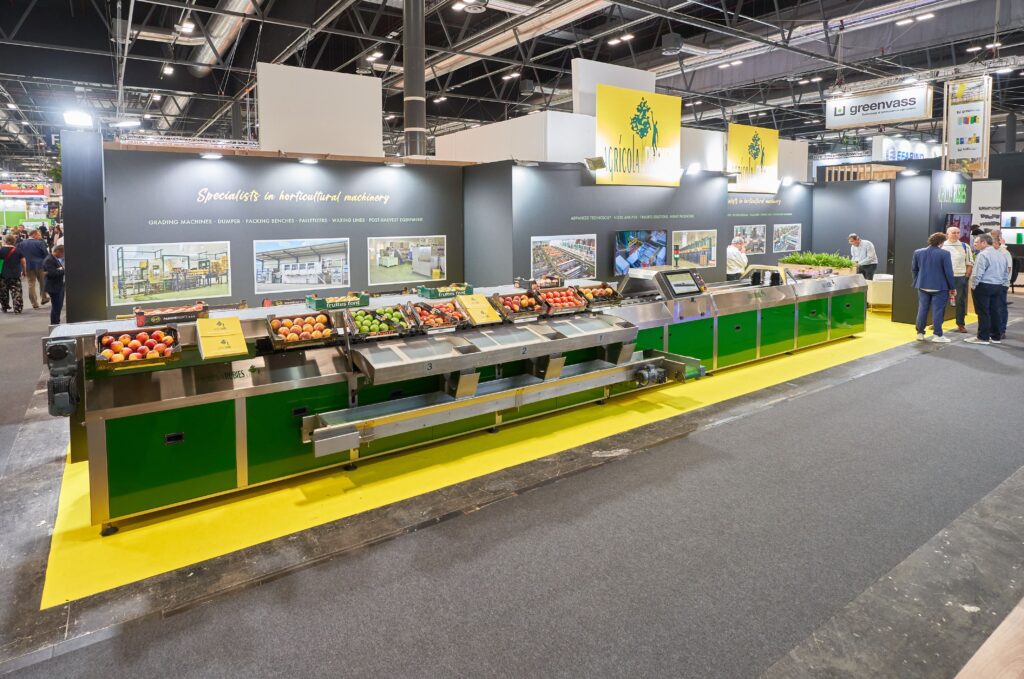
What is a showroom and how do I set it up at a trade show? The term showroom has become one of the most talked-about words in the world of trade shows and events. Often translated as “exhibition space,” it refers to an environment designed for companies to showcase their products or services in a compelling, experience-driven way. Unlike a traditional store, a showroom isn’t just about selling. Its main goal is to build trust, reflect the brand’s values, and create an immersive experience for clients, partners, and visitors. Table of contents In this post, we explore the concept of a speaker’s corner at trade shows and its role as a meeting space for sharing ideas and debating key industry topics. We also analyze how the design and layout of these spaces, managed by companies like Servis, facilitate smooth and comfortable communication for all attendees, creating an environment where ideas flow and connect, enriching the experience of any trade show. What is a showroom and what does it mean in the trade show world? A showroom is, at its core, an exhibition space where a company presents its products, services, or innovations in a carefully curated and visually appealing environment. Unlike a traditional point of sale, the showroom isn’t focused on immediate transactions—it’s about creating experiences, building trust, and reinforcing brand identity. The word “showroom” comes from English (show = to display, room = space) and literally translates to “exhibition room” or “demo room.” In industries like fashion, design, and automotive, it has been used for decades as a way to showcase new releases to clients and the media. Today, the concept goes far beyond retail. In the corporate and trade show world, a showroom is seen as an experiential brand space where visitors can: Interact directly with the products Discover the real-life benefits and applications of the solutions on display Experience the company’s values firsthand At trade shows, a showroom is not just a bigger or more polished stand—it’s a full-fledged experiential marketing strategy. Its design aims to evoke emotions, tell a story, and foster meaningful business connections in an environment where hundreds of brands are competing for attention. Advantages of a showroom Personalized experience It allows customers to explore and try products at their own pace, with the option to receive personalized advice. Brand strengthening A well-designed showroom reflects the essence of your brand, creating an emotional connection with visitors and setting you apart from the competition Direct feedback Interacting with customers provides valuable insights into their preferences and needs, helping you improve your products or services Content generation Visitors often share their experience on social media, which organically increases the visibility of your brand. Showroom at tradeshows and events Trade shows and specialized events are ideal settings for setting up a showroom. In these environments, you can: Attract a specific audience interested in your sector. Stand out from the competition by offering a unique experience. Build connections with potential customers and collaborators. While not the main focus, taking advantage of these opportunities can expand your reach and strengthen your brand. How to implement an effective showroom If you’re considering creating a showroom, whether in your own space or at events, here are some key steps: 1. Define Your Goals Set clear objectives: launching new products, enhancing customer relationships, increasing brand awareness, etc. 2. Design the Space Carefully Reflect your brand identity: use colors, materials, and decorative elements consistent with your image.Create a welcoming environment: think about lighting, sound, and layout to ensure visitors feel comfortable. 3. Facilitate Interaction Allow customers to touch and try the products.Incorporate technology: interactive screens or virtual reality can enhance the experience. 4. Offer Personalized Attention Have trained staff: a friendly and knowledgeable team can significantly improve the customer experience. 5. Promote Your Showroom Use your marketing channels: social media, email, and advertising to attract visitors.Participate in relevant events: trade shows can be an excellent platform to get noticed. Tips to maximize the impact of your showroom Regularly update the products and displays to maintain interest. Organize special activities: workshops, demonstrations, or talks can attract more attendees. Collect contact information: offer incentives for visitors to share their details, allowing you to stay in touch.
What is hospitality and how do I implement it?
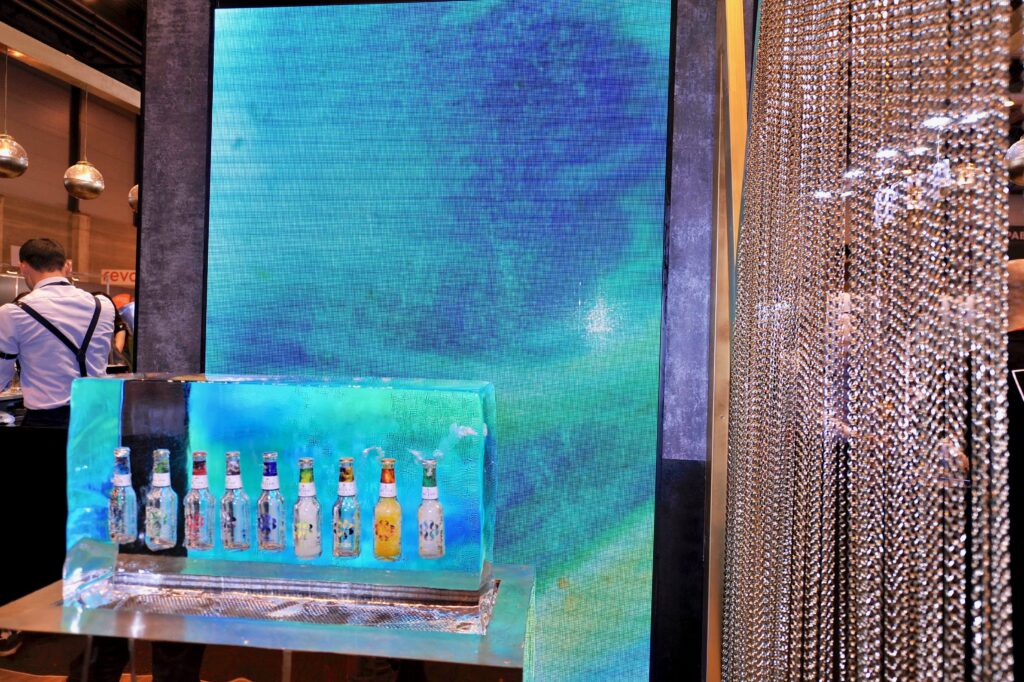
What is hospitality and how can I apply it? What is hospitality, and how can you incorporate it into your events to ensure they are a resounding success? Have you noticed how some events make you feel at home from the very first moment? That’s thanks to hospitality, a key concept in the world of events and tourism. Table of contents In this post, we explore the concept of a speaker’s corner at trade fairs and its role as a meeting point for sharing ideas and debating key industry topics. Additionally, we examine how the design and layout of these spaces, managed by companies like Servis, enable smooth and comfortable communication for all attendees, creating an environment where ideas flow and connect, enriching the experience of any trade fair. What is hospitality? Hospitality is, at its core, the art of making people feel welcome and cared for. According to the Royal Spanish Academy, it refers to the warm and friendly reception of guests. While it has traditionally been associated with hotels and inns, today it goes far beyond that, encompassing industries such as tourism, hospitality, transportation, and, of course, events. In the context of events, hospitality means paying attention to every detail to ensure attendees feel comfortable, valued, and looked after. It’s about blending professionalism with a human touch that makes the experience truly special. The Importance of Hospitality in Events Nowadays, people aren’t just looking to attend an event; they want to enjoy a complete and memorable experience. This is where event hospitality comes into play. By applying hospitality principles, you can transform an ordinary event into something attendees will remember and talk about for a long time. Hospitality in events involves: Genuinely caring about people and their needs. Making attendees feel comfortable and appreciated. Paying attention to the small details that make a big difference. Combining professional service with a warm, human touch Do you have questions about your participation in a trade show? Get our free consultation! How to implement hospitality in your events Ready to take your events to the next level? Here are some key tips to incorporate hospitality and create experiences that will captivate your guests. Plan with the Attendee in Mind Put yourself in their shoes. Imagine what they’d like to find upon arrival. Design every aspect with their comfort and enjoyment in mind, from the layout of the space to the event schedule. Anticipate special needs. Consider accessibility, dietary restrictions, or any other detail that could enhance their experience. Provide Personalized Attention Train your team to be friendly and efficient. A smile and a proactive attitude work wonders. Listen and resolve. If any issues arise, act quickly and show empathy. Make each attendee feel unique. A personalized greeting or remembering their preferences can make all the difference. Pay Attention to the Details Keep the spaces spotless. Cleanliness and organization convey professionalism and care. Create cozy rest areas. A comfortable spot to relax is always appreciated. Offer additional services. Coat checks, free Wi-Fi, or mobile charging stations are thoughtful touches attendees will value. Design a Comprehensive Experience Make navigation easy. Clearly signpost areas and ensure a smooth flow of people. Create spaces that encourage connection. Ambient music, warm lighting, and thoughtful décor help create a welcoming atmosphere. Engage the senses. Subtle scents or tastings can enhance the overall experience. Be Flexible and Adaptable Accommodate special requests. Show willingness to adapt to your guests’ needs. Handle unexpected situations calmly. Your response to the unforeseen can build attendee trust. Personalize whenever possible. Tailor details to reflect individual preferences. Conclusion Understanding what hospitality is and how to apply it in your events is the key to creating unforgettable moments. By focusing on people and the details that truly matter, you’ll not only offer a quality event, but you’ll also connect emotionally with your attendees. And that, without a doubt, is what makes an event stand out.
What is a speaker’s corner at a trade show?
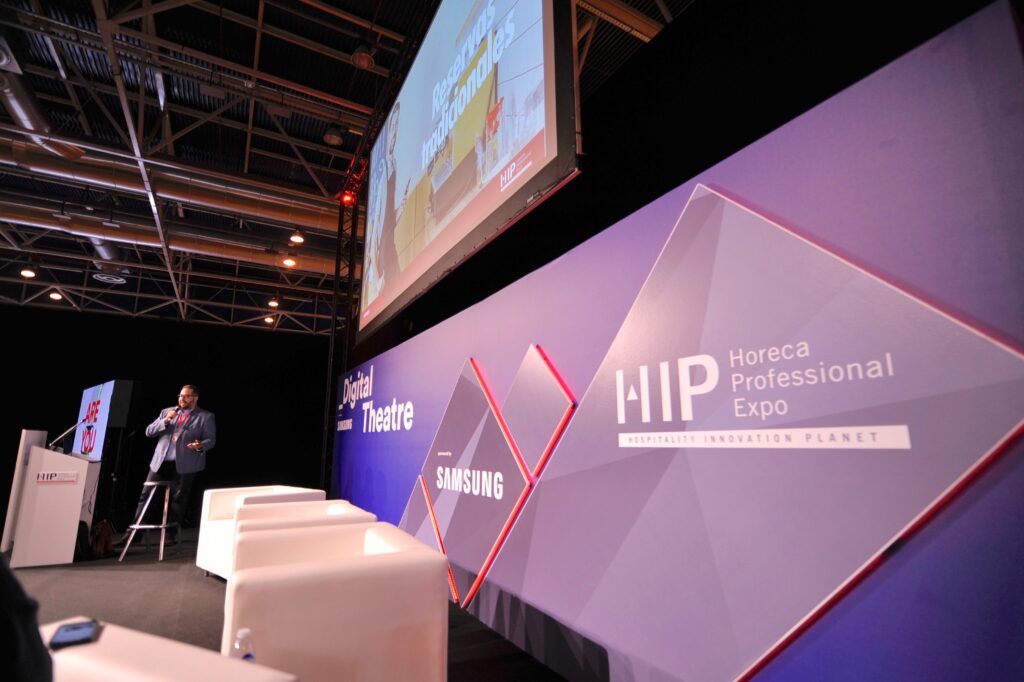
What is a Speaker’s Corner? If you’ve ever been to a trade show, you’ve likely noticed that space where it’s not just about showcasing products but also sharing ideas, insights, and innovations. That’s the speaker’s corner—a gathering spot where experts and companies deliver concise, impactful talks on key topics, designed to give the audience something more meaningful than just a business card. Table of contents In this post, we explore the concept of a speaker’s corner at trade shows and its role as a meeting space for sharing ideas and discussing key industry topics. We also analyze how the design and layout of these spaces, managed by companies like Servis, enable smooth and comfortable communication for all attendees, fostering an environment where ideas flow and connect, enriching the overall trade show experience. What is a Speaker’s Corner at a trade show? AA Speaker’s Corner at a trade show is a dedicated space for presentations, talks, and discussions on topics of interest to attendees. Inspired by the famous Speakers’ Corner in Hyde Park, London—where anyone can speak freely—this area at the trade show allows companies and industry experts to share their insights, updates, and opinions in an open and accessible wayat a trade show is a dedicated space for presentations, talks, and discussions on topics of interest to attendees. Inspired by the famous Speakers’ Corner in Hyde Park, London—where anyone can speak freely—this area at the trade show allows companies and industry experts to share their insights, updates, and opinions in an open and accessible way Do you have questions about your participation in a trade show? Get our free consultation! The keys to success in a Speaker’s Corne For a speaker’s corner to effectively achieve its purpose, it needs a well-thought-out design that encourages participation and interaction. This is where the expertise of our company, Servis, becomes essential. A well-designed speaker’s corner should be both comfortable and functional, with seating arranged to ensure clear visibility and a sound system that allows everyone to hear effortlessly, regardless of the space’s size. The atmosphere should be welcoming, enabling both the speaker and the audience to feel at ease and free to share. The goal is for everyone—from the presenter to the listener—to focus on what truly matters: the exchange of ideas. Además, es fundamental contar con una agenda de temas que sean atractivos y actuales, alineados con los intereses de los asistentes. Los mejores speaker’s corners suelen tener un programa flexible y diverso, con ponencias de distintos estilos: desde presentaciones formales hasta debates interactivos, y charlas en un tono más informal. La combinación de estos elementos hace que el speaker’s corner se convierta en un lugar de referencia dentro de la feria. Conclusion The speaker’s corner is that unique space at trade shows where ideas and dialogue take center stage, offering an experience that goes beyond simply showcasing products. With a design tailored to encourage interaction and an agenda of relevant topics, it becomes an essential meeting point for knowledge sharing and networking. Next time you’re at a trade show, take a moment to explore the speaker’s corner—you might find conversations that inspire you and provide a fresh perspective on the industry. If you’re looking to create a space like this for your next event, Servis has the expertise and dedication to design an environment where every idea has its place.
